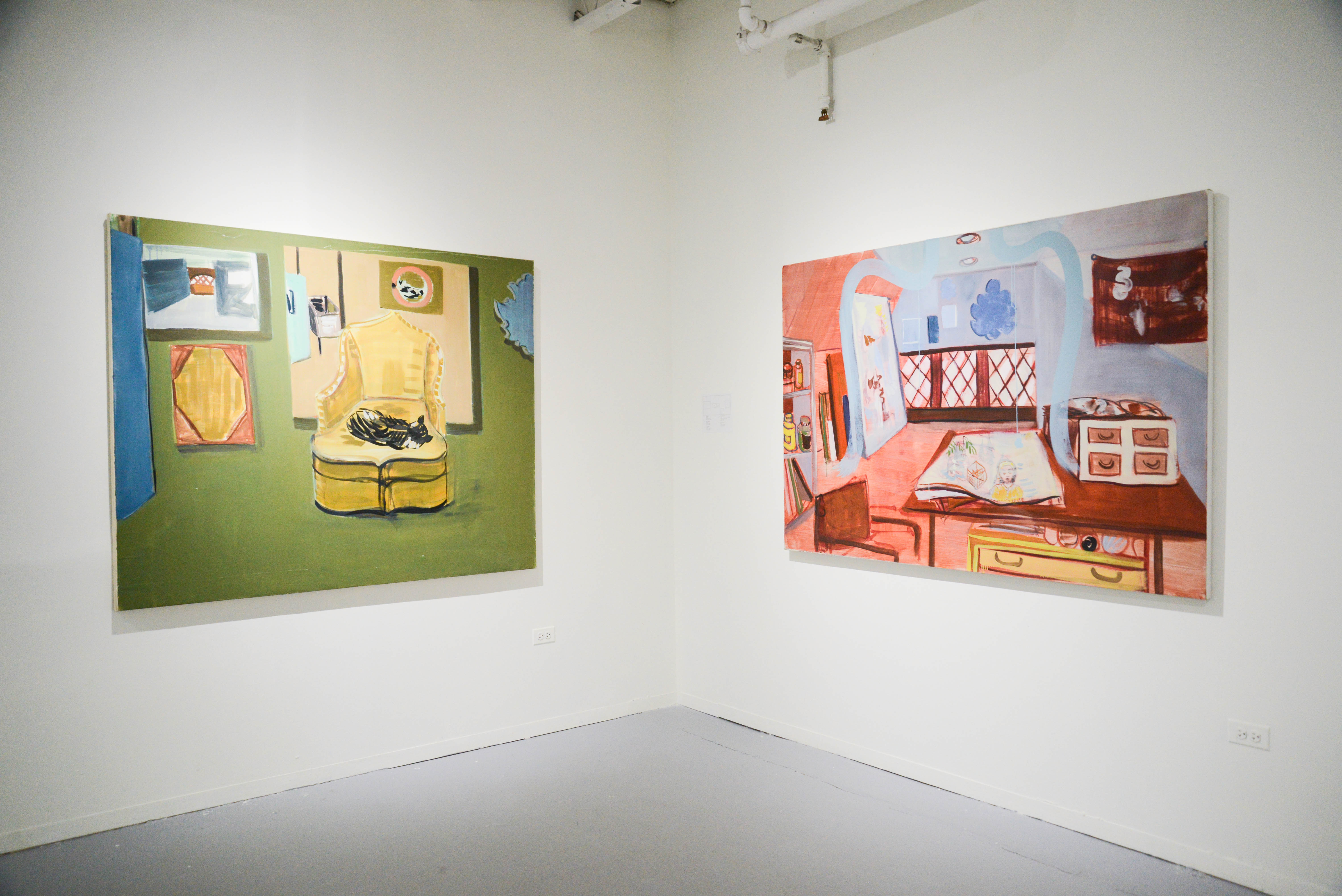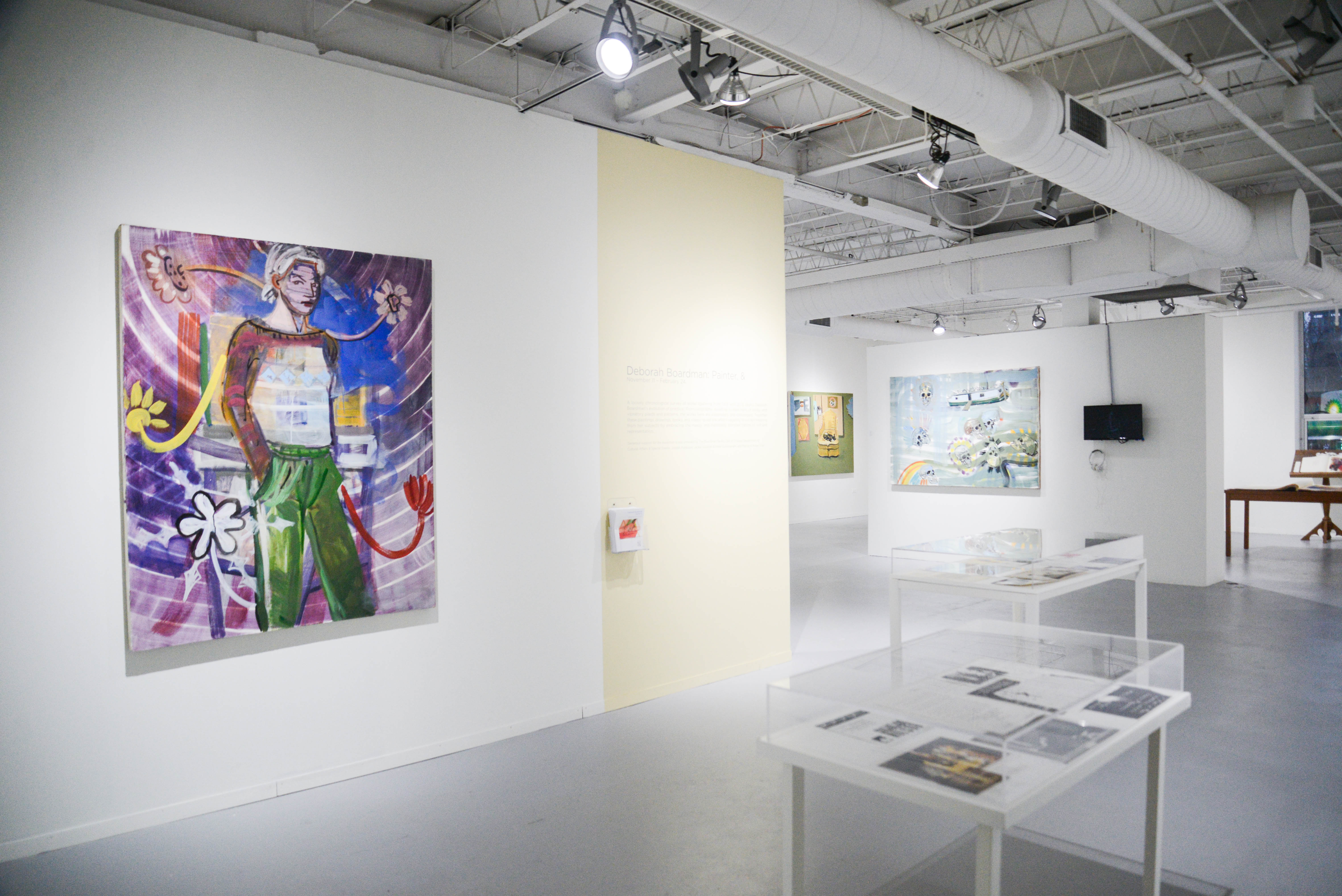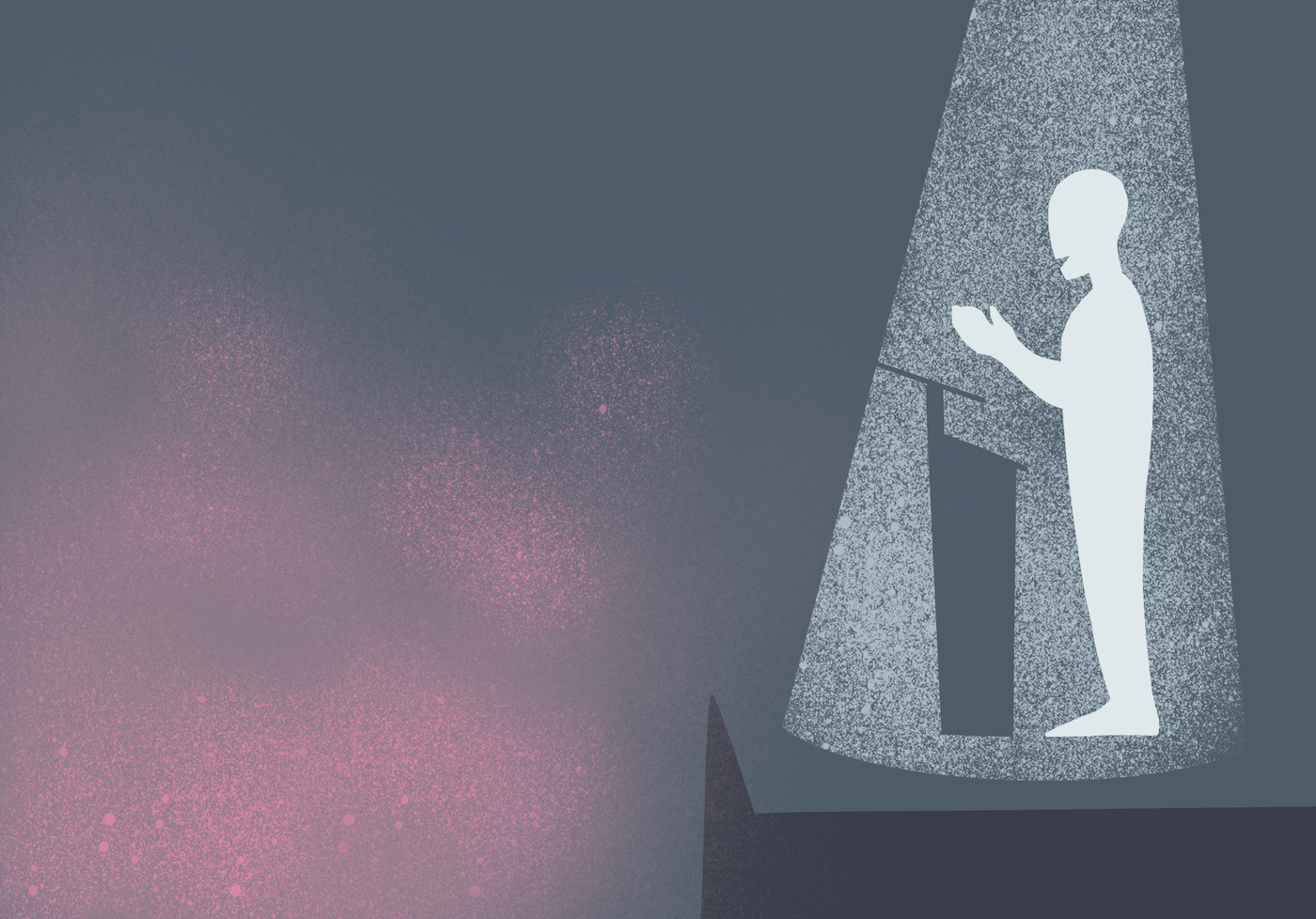
In the beginning, you were a painter, too. Remember? As children, we have an innate connection to the joy of painting and drawing. Even if you never ended up aspiring to become a so-called “serious artist,” there was a point at which painting was sheer play. But for those of us who are not singled out for prodigious skill, or who don’t hear a call from on high to keep going at all costs, the joy fades a bit. Even if we do continue sketching, we feel compelled to disavow any claims to artistic importance.
Deborah Boardman, to whom the Hyde Park Art Center has devoted the career-spanning retrospective “Deborah Boardman: Painter, &,” never lost the joy of painting. She was unafraid of tackling heavy, foundational subjects, like what it meant to be a woman growing up in the male-defined and -dominated world of Catholicism, but her work always retained the sense of enchantment that first compels children to make art. She was a prolific painter and producer of artist books, but also made film, music, and socially engaged work. Boardman taught at the School of the Art Institute of Chicago (SAIC) as an Adjunct Associate Professor in the Painting and Drawing and Arts and Administration Policy departments for nearly 20 years, until her death in 2015, of breast cancer, at the age of 57.
The show really begins in the hallway leading up to the gallery, whose walls detail some of the signal moments from Boardman’s career. In a project entitled “Mutual Borders,” Boardman was awarded a grant to work with the Community United Methodist Church in Back of the Yards, a neighborhood in southwest Chicago. At the time, three distinct ethnic congregations were collaborating in an attempt to save the dying church. Boardman interviewed congregation elders about the roles of ethnicity and economics in their lives, and worked with two teenagers from each congregation over a four-month period. While the church ultimately could not be saved, the congregations’ work lived on in the “Mutual Borders” artist book, now held in many public collections.
This is a representative example of how Boardman combatted the notion of the isolated artist. She engaged in a variety of outreach-based artistic projects, including “A Porous Space II,” for which the fault lines beneath the Gahlberg Gallery in Glen Ellyn, Illinois were identified and mapped visually within the gallery. Then, Boardman’s choral group, the La La La Singers, composed and performed a song whose lyrics were comprised of the band members’ personal faults: “excessive underarm flab,” “being a narcissistic asshole,” and “failure to be grateful for all the good in my life,” to name a few.
A video of the La La La Singers performing the upbeat, slightly skewed folk song plays on a loop in the gallery. The song impresses more than the video, whose lo-fi editing and uniformed folk ensemble make it feel a little bit like an ad for a cult, if warmly so. But the friendly premise of likening earth-faults to people-faults, and honoring people-faults as sources of both humor and poignancy, make the song an appropriate soundtrack for a show in which darkness and light are bedfellows and playfulness reigns.

The progression of paintings is meant to read like a chronological overview of Boardman’s career. Works are clustered in twos and threes, where each subsequent group represents a step forward in time and technique. Guided thus by the show’s lively curator, Jessica Cochran, I could tell how one step led to the next, and how, for example, an acrylic and oil painting quietly depicting Boardman’s Edgewater studio had so deep an emotional impetus. Without the guide, I’d likely not have reached the same conclusions. Unlike shows with a single intended path from piece to piece, “Painter, &” is based on a relatively open floor plan, meaning you can drift 20 years into the future without appreciating the biographical changes provoking the new work. Limited wall text, while effective in establishing a meditative aura, means you can fail to appreciate significant stylistic choices — the feminist motivations, for example, behind Boardman’s usage of the archaic, typically male Heraldic Emblem in her paintings.
Writ large, Boardman’s creative path has familiar themes. Early on, she produced intense work, wrestling with youthful anxieties; over time, the angsty verve was replaced by wisdom, culminating in work influenced by her reckoning with her own mortality. The intense color and varied textural landscape of “Memory & Influence (After Zurburan)” (1991-1992) eventually give way to more boiled-down experiments in pattern, particularly as manifest in her 2013 artist book “Magnetism.” The patterns’ geometric coherence and clarity of stroke and color have an immensely satisfying effect, and make you contemplate the inherent depth of pattern.
The exhibit ends in a small room connected to the main gallery, whose works you can’t see unless you go in. Appropriately, the works are those Boardman completed shortly before she passed away in 2016. The works are bright; hot pinks, yellows and whites endure in memory, as does the faux-laundry list on one, which includes “Fresh flowers,” “Tiny shining molecules,” and “Have more sex.” Under the specter of limited time left, these phrases are equally interpretable as a sort of bucket list — buy flowers, have sex, comprehend molecules — and as advice for those who’ll survive her.
Boardman’s use of text is effective in its spareness. “I Can’t Go On, I’ll Go On,” (2015) a small aquamarine square of canvas states; “Mary eats and drinks,” “Mary reads,” “Mary expresses righteous indignation,” read a few pages of “Stations of Mary” (1990), a sort of gothic children’s book. Because her text stays well within its capabilities, it serves as supplement to the power of her images.

One of the challenges faced by the curator was how to present Boardman’s artist books, which were central to her practice. Because Boardman treated the artist book as a form unto itself, her books contain much of her best and most stimulating work. The books are presented in “Painter, &” on a long, wide table, open and available to page through if you wear small white gloves. The sheer number of books, in addition to their elegant design and execution, give the viewer the sense that Boardman was a true obsessive, devoted to her craft, creating as large a record as she could. The richness of time spent and care given emanates from the table, and from the nearby shelves, on which rest a couple dozen more books and notebooks.
What emerges, collectively, is a portrait of Deborah Boardman as someone deeply concerned with connection. Her work in and out of the studio centers around how best to transcend the boundaries between people. Her style, carefully crafted and always inviting, makes you feel that regardless of whether you have artistic breeding, there’s something for you here. The chronology of her life and the themes central to her work could have been better demonstrated. But even without these narrative backdrops, you’ll emerge from the show with a sense of playful enigma, the inflection point of all artistic play, whose experiments are both deliriously fun and deeply serious.
“Deborah Boardman: Painter, &” runs through February 24 at the Hyde Park Art Center.







